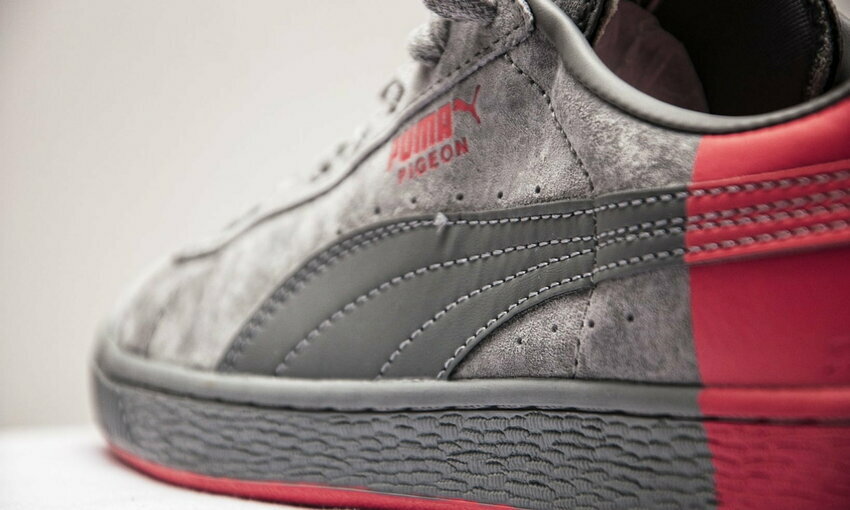 (Credit: Pixabay)
(Credit: Pixabay)Puma SE has been designing and making athletic shoes and casual apparel since 1948. The Germany-based company is the world’s third-largest sportswear maker. Puma’s employees, customers, and shareholders are concerned about sustainability, pushing the company to adopt its so-called “10for25 sustainability strategy” which is linked to the UN’s climate goals. That includes using more renewable energy and offering more sustainable products with environmentally-friendly materials.
“On climate action, we decided to calculate a product carbon footprint for each of PUMA’s top-selling products,” the company’s 2021 sustainability statement says. "We confirmed our intention to upgrade our science-based CO2 emissions target to a 1.5-degree pathway and we want to enhance our consumer communication on climate topics… “All PUMA leaders globally – from CEO to Team Head level – have clearly defined sustainability targets as part of their annual performance bonus,” the report continues.
Puma grades itself yearly, with 40% being the lowest-possible passing score. Overall, it scores a 60% on wastewater, water, energy, and environmental management. It says that chemicals, air, and waste are the fields in which it can improve. To that end, it aims to reduce its Scopes 1 and 2 greenhouse gas emissions by 35% by 2025 from a 2017 baseline. That applies to emissions at its operations and among the fuels it buys.
It also plans to cut its Scope 3 emissions tied to its value chain for purchased goods and services by 60% by 2030, achieved primarily by focusing on the transport of goods and cutting down on its air freight by 5% annually.
“Our absolute emissions from the purchased goods and services category have decreased by 12% from 2017 to 2021 while our business has grown by 65 %,” says Puma. "Due to efficiency improvements and the use of renewable electricity at the factory level, as well as the usage of more sustainable materials, our emissions relative to sales have decreased by 46% in the same period, in line with our Science-based target of 60% reduction relative to sales until 2030.”
It also aims to use 100% renewable energy in its businesses while expanding the use of green energy among its core suppliers by 25%, all by 2025. The company buys renewable energy credits in places where it does not have access to green energy supplies. “We purchased RECs worth 50% of PUMA’s emissions from electricity for 2018 retroactively and increased that figure to 74% in 2019 and 100% in 2020 as well as 2021.”
Such a strategy allowed the company to reduce its Scopes 1 and 2 emissions by 88% using a 2017 baseline. To achieve even better results, the company increased the number of zero or low-emission cars globally to 108, or 15% — a number it will ratchet up by 10% a year.
Puma agreed in 2015 to set science-based targets to reduce its greenhouse gas emissions starting in 2018. Those targets align with the Paris climate agreement, which wants to limit temperature increases to 1.5 degrees Celsius compared to pre-industrial levels.
What is Puma doing to increase the sustainability of its products?
Despite the global attention on sustainability, biodiversity is at risk. To respond to those concerns, Puma executed its 10FOR25 sustainability strategy, which is linked to the UN’s Sustainable Development Goals. In its efforts for a biodiverse nature, it works with the NGO Canopy, which seeks to protect the world's forests, species, and climate.
With that, PUMA expanded the usage of recycled polyester to 43%, in line with their target to have 75% recycled polyester in their apparel and accessories by 2025. PUMA is also on track to remove plastic shopping bags from their stores in 2023. Specifically, the absolute emissions at leather tanneries have dropped by 33%, followed by footwear factories at 14%.
“Absolute GHG emissions from raw material consumption are decreasing by 26% as the total material consumption itself is increasing by 19%, while the GHG intensity of materials is reducing by 55% since 2017,” the company says. “This is achieved due to our continuous endeavors to shift towards more sustainable materials, for example. More sustainable cotton and polyester increased from 40% and 47% respectively in 2017 to 99% and 80% respectively in 2021.”
The company is also concerned about water stewardship. Its core suppliers in China, Vietnam, and Bangladesh are at risk of flooding, poor water quality, or water depletion, necessitating an “internal awareness” of the dangers.
Moreover, the company performs risk assessments for suppliers, factories, and sites and manages those hazards for each. It says that its suppliers have reduced water usage per piece of apparel by 44%. Its goal is to improve water efficiency by 15% in 2025 compared to a 2020 baseline.
“We will continue to enroll more factories in cleaner production programs to improve their water efficiency," it says. "We see water savings of 2,424,800 m3 per year as a result of our core suppliers enrolled in a cleaner production program, which includes water efficiency action.”
Meanwhile, plastic shopping bags and single-use plastics contribute to unnecessary waste. By eliminating them from its stores and offices, Puma is reducing plastics use by several hundred tons per year. In recent years, it switched its shopping bags to polyethylene bags with 80% recycled content. And, in 2021, 88% of Puma’s offices globally had eliminated single-use plastic cups and cutlery.